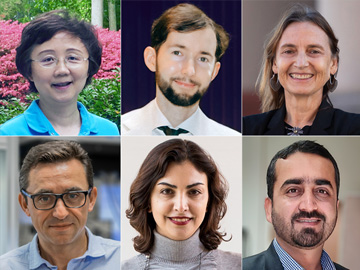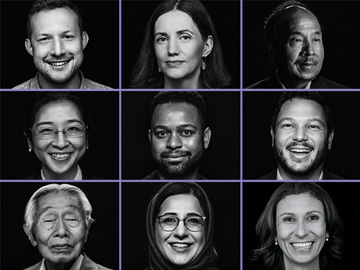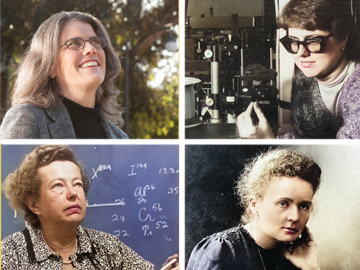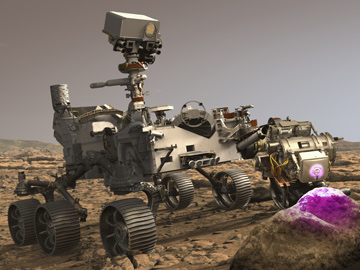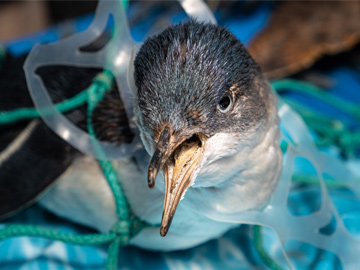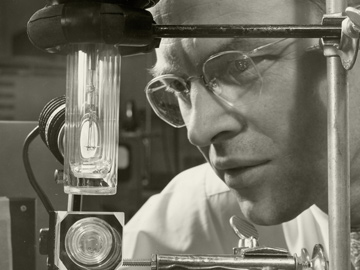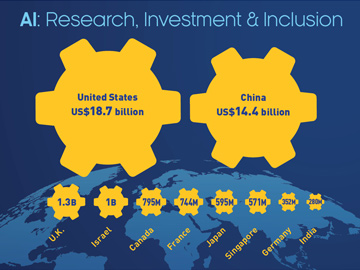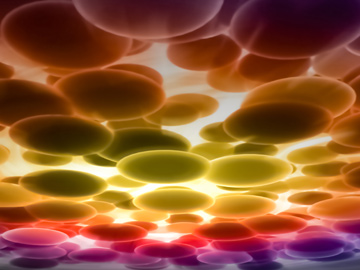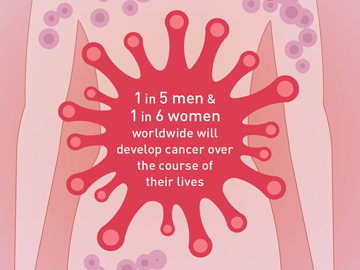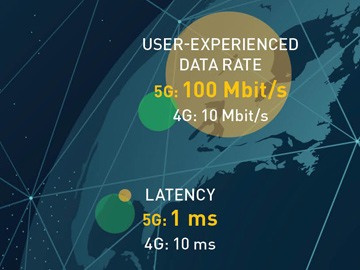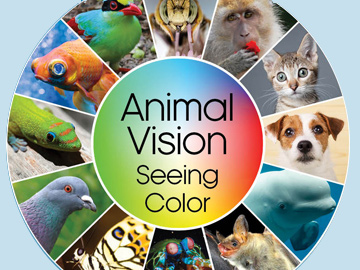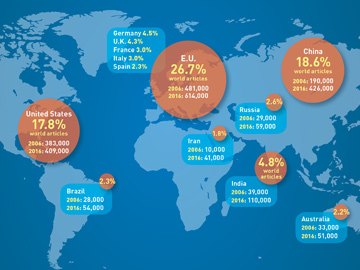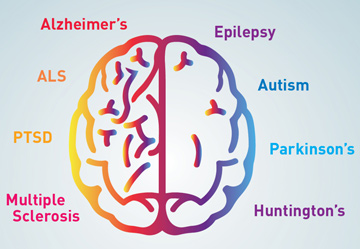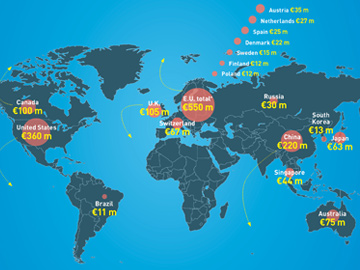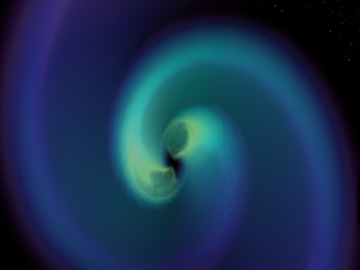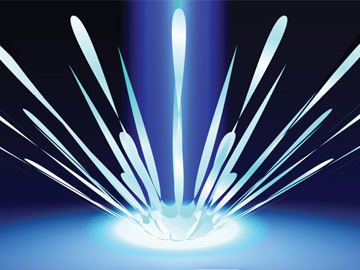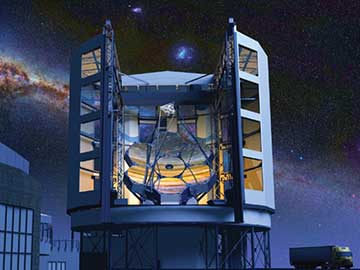Infographic
Global Quantum Funding
Governments worldwide are increasing their funding commitments for quantum technology. Here’s a look at total historic investments for various countries/regions. [June 2024]
Infographic
XFEL Light Sources
Here we look at the setup for the world’s six most powerful X-ray free-electron laser facilities. [May 2024]
Infographic
Structural Color in Nature
Much of the vibrant color present in nature results from the physical interaction of light with nanostructured materials—producing some of the beautiful displays of color seen here. [April 2024]
Infographic
Sourcing Lithium
A look at the global distribution of lithium—a critical component in the rechargeable batteries that power electric vehicles and many of today’s electronics. [March 2024]
Infographic
UV Color: Flower Power
The UV colors in sunflower petals not only help to improve pollination, but also assist the flowers in responding to environmental stresses. [February 2024]
Infographic
Optics in 2024 & Beyond
Each December, OPN looks at interesting research results of the past year. But what about the year ahead? We asked several contributors to our “Optics in 2023” feature for thoughts on 2024. [December 2023]
Infographic
Aquatic Vision
In the underwater world, where light can be limited and visibility murky, the eyes of several aquatic creatures have adapted—possibly providing advantages over predators and prey. [November 2023]
Infographic
The Road to GPT
In November 2022, OpenAI debuted ChatGPT, an AI chatbot with an extensive knowledge base and deductive abilities capable of producing natural language responses almost indistinguishable from those written by humans. [October 2023]
Infographic
A World on Fire
A 2022 United Nations report warned of the potential for considerable increases in the intensity and range of wildfires by the end of this century as temperatures rise. [September 2023]
Infographic
Webb Imagery: Science & Art
The beautiful images from the James Webb Space Telescope begin as infrared-light observations beyond what our eyes can detect. [July/August 2023]
Infographic
Implanted Lenses
With an estimated 20 million surgeries performed each year worldwide, cataract extraction is the most common surgical procedure across all medical fields. An implanted intraocular lens helps restore post-cataract vision. [June 2023]
Infographic
STEM Education & Workforce
A recent US National Science Foundation report shows both STEM education and employment have diversified over the past decade, yet underrepresentation is still present. [May 2023]
Infographic
Microscopy & the Nobel
A look at the five Nobel Prizes awarded in the area of microscopy. [April 2023]
Infographic
The Road to Ignition
On 5 December 2022, the National Ignition Facility (NIF) of the Lawrence Livermore National Laboratory (LLNL), USA, demonstrated fusion ignition for the first time. Here we look at key events at NIF leading to ignition. [February 2023]
Infographic
Optics in 2023 & Beyond
We asked several contributors to our “Optics in 2022” feature for thoughts on areas that might advance in 2023. [December 2022]
Infographic
Mixed-Gender Teams: Producing High-Impact Science
A recent analysis of 6.6 million published papers from more than 15,000 medical journals worldwide found that gender-diverse teams produce more novel and highly cited papers than all-men or all-women teams. [November 2022]
Infographic
Lasers & the Human Eye
Accidental exposure to a single direct or reflected laser beam can cause irreversible damage to the human eye—depending on the wavelength, output and exposure duration. [October 2022]
Infographic
Student Knowledge: Math + Science
Administered every four years since 1995, the IEA's Trends in International Mathematics and Science Study (TIMSS) assesses mathematics and science knowledge of students around the world. [September 2022]
Infographic
Frederic Ives: Lifelong Inventor
Frederic Ives, namesake of Optica’s highest award, is best known for the Ives halftone process. However, he was also a pioneer in color photography, 3D film and patented at least 70 inventions. [June 2022]
Infographic
User-Centered Smart Homes
The success of smart-home technology will depend on users making it part of their everyday routines. User-centered smart-home solutions focus on different needs for different stages of life. [May 2022]
Infographic
Toward Zero-Carbon Cities
Copenhagen, Denmark, has concrete plans to achieve carbon neutrality by 2025—setting an example for cities worldwide. [April 2022]
Infographic
Decarbonizing Glass
The glass industry has one of the highest per-capita production volumes worldwide. Creating glass is also an energy-intensive process. Here we show some decarbonization options for a more sustainable future. [March 2022]
Infographic
The Global Supply Chain
An October 2021 International Monetary Fund report noted continued pandemic-related supply chain disruptions that could slow the global economic recovery. Here are a few highlights. [January 2022]
Infographic
Optics in 2022 & Beyond
Each December, OPN looks at interesting research results of the past year. But what about the year ahead? We asked several contributors to our “Optics in 2021” feature for thoughts on areas that might advance in 2022. [December 2021]
Infographic
The Faces of Optica
To celebrate the extraordinary global diversity of our community, renowned portrait photographer Sam Barker has taken a series of portraits of Optica members. Visit optica.org/faces to view the full gallery. [October 2021]
Infographic
Nobel Women of Science
Next month, the Nobel Prizes for 2021 will be announced. Here we look at women who have received the Nobel Prize in physics, chemistry and physiology or medicine. [September 2021]
Infographic
STEM Workforce Post COVID-19
A recent McKinsey Global Institute report explored COVID-19’s impact on the future of work in eight economies, looking at both trends in place before the pandemic and changes that it has accelerated. [July/August 2021]
Infographic
African Photonics
In recent years, the number of optics and photonics programs across Africa has increased. Here we highlight some of the continent’s largest photonics centers and their primary areas of research. [May 2021]
Infographic
The AR/VR Solution
The COVID-19 pandemic has pushed many normally in-person activities to virtual spaces. Augmented reality (AR) and virtual reality (VR) offer scientists a promising alternative for conducting potentially life-saving studies and trials. [April 2021]
Infographic
Meeting the Future: Fiber
A widely cited 2018 paper in Optics Express considered how well optical transmission systems would meet the challenges ahead. Recently reported advances show that fiber is on track to meet those challenges. [March 2021]
Infographic
Mission: MARS
Three space missions are scheduled to reach Mars in February 2021—expanding the search for life and paving the way for future exploration. [February 2021]
Infographic
Global Trust in Science
A recent international Pew Research survey found that a majority of respondents had “some” to “a lot of” trust in scientists and a mostly positive view of the impact of scientific developments. [January 2021]
Infographic
Optics in 2021 & Beyond
Each December, OPN looks at interesting research results of the past year. But what about the year ahead? We asked several contributors to our “Optics in 2020” feature for thoughts on areas that might advance in 2021. [December 2020]
Infographic
Plastic in the Oceans
According to a recent report by the Pew Charitable Trusts and SYSTEMIQ, without action, the annual flow of plastic into the world’s oceans will nearly triple by 2040. [November 2020]
Infographic
Race to the Diode Laser
The early days of research into a landmark technology. [October 2020]
Infographic
Diversity: Scientific Research
While diversity in U.S. education has increased in recent years, minority representation continues to lag in the area of scientific research—particularly in physics. [September 2020]
Infographic
Looking Beyond 5G
Even as 5G wireless moves into the mainstream, technologists are already looking ahead to the next generation—6G, expected to come on stream in the 2030s. [July/August 2020]
Infographic
Explore Science Virtually
The effort to contain COVID-19 has many millions around the globe working and learning from home. [May 2020]
Infographic
Funding Global Health
The global impact of the current coronavirus outbreak highlights the importance of scientific research in maintaining world health. [April 2020]
Infographic
Artificial Intelligence
The field of AI is expanding rapidly. Here we look at some statistics for global AI research, investment and inclusion. [March 2020]
Infographic
Toward Exawatt Power
With up to 10 petawatts of peak laser power, the EU’s three ELI facilities include the most powerful lasers to date. A planned fourth ELI pillar and a few other high-intesity laser projects could boost peak power even further, reaching the exawatt scale. [January 2020]
Infographic
Optics in 2020 & Beyond
Each December, OPN looks at interesting research results of the past year. But what about the year ahead? We asked several contributors to our "Optics in 2019" feature for thoughts on areas that might advance in 2020. [December 2019]
Infographic
Rising Ocean Levels
The global ocean covers 71% of the Earth’s surface and contains around 97% of the Earth’s water. Even a small change in the ocean levels—for example, from rapidly melting ice sheets—can have a significant impact. [November 2019]
Infographic
Ready to Print in 3-D?
Thanks to lower prices and increased availability for desktop 3-D printers, now might be the time to try 3-D printing at home. [October 2019]
Infographic
Nano in Our Food
The addition of nanoparticles to food has the potential to improve food quality, safety and nutrition. However, because of their small size, there is also the risk that ingested nanoparticles could damage cells or organs. [July/August 2019]
Infographic
Global S&E Doctorates
Since 2000, the number of internationally mobile students has more than doubled to 5 million worldwide—representing 26% of enrollment in doctoral programs. [June 2019]
Infographic
Extremely Large Telescopes
The next generation of ground-based infrared telescopes will have resolving power far beyond what is available today. [May 2019]
Infographic
Cancer: A Growing Global Concern
Global data from the International Agency for Research on Cancer shows 18.1 million new cases and 9.6 million cancer deaths in 2018. [April 2019]
Infographic
5G: Unmatched Connectivity
The tremendous speed and low latency of 5G will allow users to respond to ever-increasing volumes of data, and to remain connected around the clock to a world of devices beyond computers and phones. [March 2019]
Infographic
Perfecting Smartphone Photos
The back of your mobile phone may soon be covered with tiny lenses that take simultaneous images that are computationally stitched together for new effects and capabilities. [February 2019]
Infographic
Animal Vision: Seeing Color
Color perception in animals has evolved to help in collecting information about the environment—from recognizing food sources to selecting mates. [January 2019]
Infographic
Scientific Research: A Global Production
Over the past decade, production of research-based science and engineering knowledge has grown worldwide. Here we look at the top article-producing countries and international collaborators. [December 2018]
Infographic
Spectroscopy & the Nobel
Since the Nobel Prize was established in 1895, a surprising number of the awards have gone to advances related to or enabled by spectroscopy. [October 2018]
Infographic
Photonics for Health & Earth
As part of this month’s special issue on photonics in Europe, here we look at some ways photonics could help solve major challenges facing Europe and the world by 2030, as outlined in a vision document by the European technology platform Photonics21. [September 2018]
Infographic
Robot Ready
Preparing for an AI and robotic future requires investments in education and innovation. [July/August 2018]
Infographic
Phytoplankton and Climate Change
Phytoplankton are the ocean’s primary producers, basic food source and carbon recycler—even a slight change in their productivity could affect the world’s climate. [June 2018]
Infographic
The Laser: Expanding our World
When Theodore Maiman successfully operated the first laser on 16 May 1960, it was impossible to imagine how integral lasers would one day become to our daily lives. [May 2018]
Infographic
Investing in the Brain
As the world population ages, knowledge of neurodegenerative diseases is becoming increasingly important. [April 2018]
Infographic
Optics & Art: Revealing the Hidden Truth
Noninvasive optical scanning methods are also being used to reveal hidden layers in artworks, and to help confirm creation dates and authenticity without risk of damage. [March 2018]
Infographic
Quantum Technology: Funding the Future
McKinsey & Co. estimates that combined worldwide spending on nonclassified quantum-technology research amounted to around some €1.5 billion in 2015. Here’s how those numbers were distributed globally. [February 2018]
Infographic
A Global Astronomy Event
In the seconds, hours and days after LIGO and Virgo detected gravitational waves from a neutron star collision on 17 August, some 70 gamma-ray, X-ray, optical and radio telescopes detected signals from the same event—kicking off the era of multi-messenger astronomy. [December 2017]
Infographic
Laser Power
Laser power spans many orders of magnitude—from the microwatt beams of some continuous-wave (CW) lasers, to the European Extreme Light Infrastructure (ELI), whose femtosecond-scale pulses can deliver petawatt peak power. [October 2017]
Infographic
An IoT-Connected World
How the emerging Internet of Things could change life from the home to the roadway to the farm to the factory floor. [September 2017]
Infographic
Lidar: Uncovering Lost Cities
With the aid of drones and light detection and ranging (lidar) technology, researchers are uncovering new insights on ancient civilizations. [June 2017]
Infographic
Observing the TRAPPIST-1 System
Next-gen telescopes are poised to explore whether an intriguing, newly discovered system could potentially harbor life. [May 2017]


